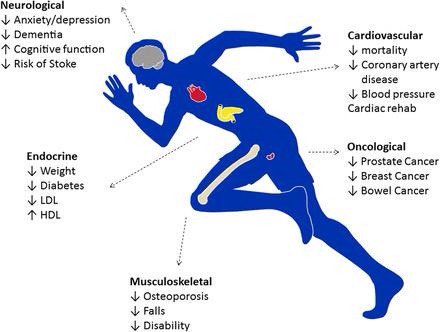It’s never too late to think about adopting a healthier lifestyle. It doesn’t mean that you suddenly have to change your diet and start spending every day at the gym. Just a few small changes can make a big difference - making you feel better, giving you more energy and helping you to sleep more soundly.
Research shows that having a positive attitude to life in general, and to getting older, can help you enjoy better health too. Choosing activities that give you an opportunity to meet people or play an active role in your local community can also help.
It’s important to remember the parts of your body that are crucial to keeping active - your feet, eyes and ears.
This blog post highlights changes you may like to consider and the benefits they can bring
STEPS IN MAINTAINING A HEALTHY BODY
Stay active
There’s no doubt that keeping active makes us feel more energetic. But there are other more specific benefits, including helping to:
• manage high blood pressure and angina
• keep you at a healthy weight
• maintain regular bowel movements
• stimulate a poor appetite
• strengthen muscles and bones, which reduces the risk of falls and fractures
• ease discomfort if you have arthritis or Parkinson’s.
Regular exercise also increases production of brain chemicals that lift your mood and make you feel happy - so it can be a good way to deal with stress and anxiety.
Developing and maintaining stamina, strength, flexibility and balance are particularly important as you get older, and can help you to do everyday tasks more easily as well as enjoy activities more.
Stamina helps you to walk longer distances, swim and mow the lawn.
- Strength helps you to climb stairs, carry shopping, rise from a chair and open a container.
- Flexibility helps you to bend, get in and out of a car, wash your hair and get dressed.
- Balance helps you to walk and climb steps confidently, stand from a sitting position and respond quickly if you trip.
- Any amount of extra activity that’s appropriate for your age group and health makes a difference.
If you don’t do any exercise
If you haven’t been very active before it’s never too late to start. Try to limit the amount of time you spend sitting watching the TV, reading or listening to music. Everyday activities count as exercise, so look out for simple ways you can become more active. They could include:
• walking to the shops instead of taking the car or bus
• using the stairs instead of lifts or escalators
• doing the housework.
Every 10 minutes count so try and set yourself achievable goals every day. Always build up gradually and speak to your GP before increasing your activity levels significantly.
If you’re fairly active but could do more
If you’re generally fit and have no health conditions that limit your ability to move around, the Government recommends that you build up to doing two-and-a-half hours of moderate activity each week.
Moderate activity may leave you feeling warm and a little breathless. It can include:
• walking fast
• cycling on level ground
• playing a motion sensor game on a computer console like a Wii or Xbox
• hand washing the car.
If you’re already active
If you’re already active, you can improve your fitness and health by doing 75 minutes of vigorous activity a week. This can include:
• running
• cycling fast or up hills
• climbing stairs
• playing tennis or football.
Muscle-strengthening activities
Staying active isn’t just about getting your heart rate up. It’s important to keep your strength up too. The Government recommends that you build up to two sessions of muscle- strengthening activity a week.
Exercises that help strengthen your muscles can include dancing, heavy gardening, yoga and pilates. Lifting bags of shopping or weights can help to strengthen the muscles in your arms and wrists. For more information on improving your strength and balance, see our free guide Staying steady.
What kind of exercise might suit you?
Different activities bring a different range of benefits, so try a variety of things. Finding something you enjoy means you’re more likely to do it regularly. The benefits of some activities and exercise classes are outlined below.
You don’t have to be moving around to benefit from exercise. Chair-based exercises, which you can do while sitting or holding on to the back of a chair, are ideal for improving muscle strength and flexibility. You can watch videos online that demonstrate chair-based exercises.
If you’re physically able, but find yourself sitting in front of the computer or television for hours at a time, try to break it up and build activity into your day. You can do this by going for a short, brisk walk around the garden or in the street - for example, during the advert breaks or after writing an email.
However, if you have a health condition that makes moving about difficult or painful, such as Parkinson’s, arthritis or osteoporosis, always consult your GP for help in choosing the right exercise for you. They may be able to suggest suitable activities and know of special exercises or classes for people with these health conditions. In some areas, your GP may be able to refer you to a structured exercise scheme, where trained instructors introduce you to exercise over a period of 12-20 weeks.
Alternatively, you can contact the relevant organisation for your health condition to find out how taking part in an exercise programme could help you.










